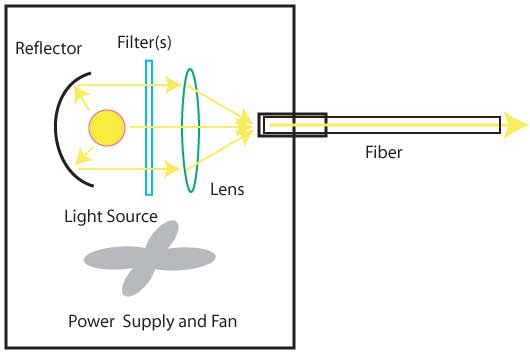Introduction of Optical Light
Optical light has become a cornerstone in the fields of communication and technology, driving innovation and efficiency in numerous applications. From enabling the rapid transmission of data across the globe to revolutionizing medical procedures and manufacturing processes, optical light’s impact is profound. This article explores the critical role optical light plays in modern technology, its various applications, and the future potential unlocked through ongoing research.
The Advent of Optical Light in Communication
Revolutionizing Data Transmission Optical light has transformed communication by allowing for the rapid transmission of information across vast distances. Fiber optic cables, which harness the properties of light, have created a high-capacity, low-cost, and secure communication network. This innovation has been pivotal in the development of the internet, enabling fast and efficient data transfer, which in turn has fueled the growth of digital communication and e-commerce.

Applications of Optical Light in Technology
Medical Advancements
Beyond communication, optical light has driven significant advancements in various technological sectors. In medicine, it is used in diagnostic imaging techniques like endoscopy and fluoroscopy, allowing doctors to visualize internal body structures with precision. Additionally, laser surgery, which utilizes high-intensity light beams, has enhanced surgical precision and reduced tissue damage, improving patient outcomes.
Impact on Manufacturing
The manufacturing industry has also reaped the benefits of optic light technology. Techniques such as laser cutting and welding use focused light beams to achieve precise material cuts or joins, improving accuracy, reducing costs, and enhancing product quality. Optical light is also crucial in quality control, where it is employed in inspection and measurement processes to ensure strict adherence to standards.
Ongoing Research and Future Potential
Despite its current applications, research into optical light continues to unveil new possibilities. One area of focus is quantum computing, where optical light could be used to perform complex calculations at unprecedented speeds by leveraging quantum mechanics. Success in this area could revolutionize computing, leading to significant breakthroughs in fields such as artificial intelligence and data analysis.
Conclusion of Optical Light
Optical light is essential in driving advancements in communication and technology, with applications ranging from data transmission to medical procedures and manufacturing. The ongoing research into its potential, particularly in quantum computing, underscores the importance of continued investment in this field. By fully harnessing the capabilities of optical light technology, society stands to benefit from faster, more efficient, and more secure systems across various industries.
Summary FAQ on the Role of Optical Light in Communication and Technology
Q1: What is the role of optical light in communication?
- Optical light is used in fiber optic cables to transmit data quickly and securely over long distances, playing a critical role in the development of the internet and digital communication.
Q2: How does optic light contribute to medical technology?
- In medicine, optic light is used in diagnostic imaging techniques like endoscopy and fluoroscopy, allowing precise visualization of internal structures. It is also used in laser surgeries, which improve precision and reduce tissue damage.
Q3: What are the applications of optic light in the manufacturing industry?
- Opticlight is used in laser cutting and welding to achieve high precision in material processing, improving accuracy and reducing production costs. It is also employed in quality control processes for inspection and measurement.
Q4: What future potential does optic light have in technology?
- Ongoing research is exploring the use of optic light in quantum computing, which could revolutionize the field by enabling faster and more complex calculations, potentially leading to breakthroughs in artificial intelligence and data analysis.
Q5: Why is continued research into optic light important?
- Continued research is vital to fully harness the potential of optic light, which could lead to significant advancements in various industries, improving efficiency, security, and technological capabilities.


